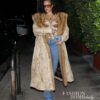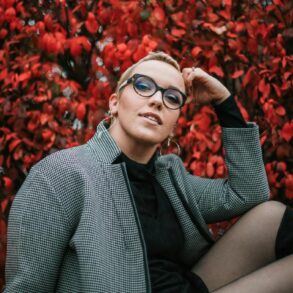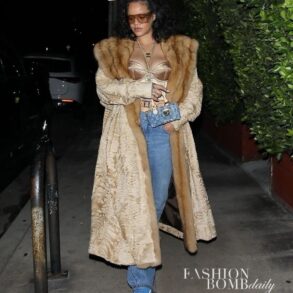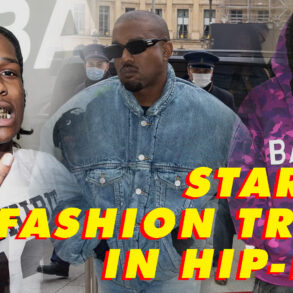Fashion and style have always been important to Hip-Hop, from rappers shouting out what they wore and what brands they liked to the impact the genre has on global culture. In the past three years since author Sowmya Krishnamurthy made the “some personal news” announcement that she signed a book deal for Fashion Killa: How Hip-Hop Revolutionized High Fashion, she has worked tirelessly to create the first comprehensive anthology on Hip-Hop and high fashion. She draws from exclusive interviews with Hip-Hop artists like Pusha-T and Just Blaze and fashion icons like Dapper Dan and April Walker—in addition to her own reporting—to put together a love letter to Hip-Hop. It’s for readers who enjoy deep dives into history, psychology, sociology, and culture, taking away more appreciation for Hip-Hop as a whole.
The idea for Fashion Killa dates back to a 2018 XXL feature documenting the history of how Hip-Hop and fashion started working together. The former executive editor, John Kennedy, who is an alum of VIBE and gets a shout-out in her acknowledgments, assigned Krishnamurthy the story and believed she was the perfect fit for it. “Initially it was only 1,500 words. It was a short article. I interviewed A$AP Ferg, and stylist Misa Hylton, a stylist who worked with Young Thug and Travis Scott. And in those conversations, I realized just how deep the story is,” Krishnamurthy says. “Only a few years later when I was contemplating my first book did this idea resurface. I just felt it was such perfect timing because at the time things like the Met Gala and Paris Fashion Week were really becoming a part of the Hip-Hop lexicon. Virgil Abloh was over at Louis Vuitton. The things that were going on in the zeitgeist to me felt like the perfect storm.”

David Noles/Courtesy of Sowmya Krishnamurthy
In the 16 chapters, you’ll pick up gems like how the early VIBE covers from the ’90s covered all facets of Hip-Hop and defined pop culture, creating commentary around an artist month to month. She writes about cultural moments like the Lo Life Crew, who boosted Polo Ralph Lauren in New York City in the late ’80s, Aaliyah and Tommy Hilfiger, Lil Kim’s evolution as a fashion influencer, and Young Thug’s gender-fluid style. It was critical for Krishnamurthy to showcase the gravitas and significance of this connection, utilizing the intersection of cultural commentary and oral history to tell it properly. “The way the book is set up is a 50-year retrospective, but every chapter also stands alone,” she says. “I wanted it to be extremely readable for people. It’s an enjoyable read. Of course, you’re going to learn a lot. You’ll read it and be the person at the next party wowing everybody with random, obscure facts about Hip-Hop fashion. You’ll never watch the Met Gala the same way again.”
Krishnamurthy spoke to VIBE about her history with A$AP Rocky and why she named it after him, what she learned about Hip-Hop from the writing process, and why she believes Cardi B would make a great fashion designer.
VIBE: You and A$AP Rocky have a history together. You interviewed him one time and he complimented you on your outfit.
Sowmya Krishnamurthy: When I interviewed Rocky, I interviewed him for the Village Voice I want to say for the first time. I met him before. I was a fan of him on the mixtape level. He was releasing a studio album, and I was a little bit nervous about what to wear. This guy is very fashionable.
I was rifling through my closet and I ended up wearing a shirt from a streetwear brand that we were both fans of at the time. And when he gave me that nod, I was like, ‘Okay, great, that’s the icebreaker.’ And we were able to have a good conversation.
Rocky’s probably the only artist that I was actually cognizant of what I was wearing. I would have to give that to him for sure because the standards are high. This is the Fashion Killa, the namesake of the book. So, if you’re gonna come in front of Rocky, you gotta come correct.
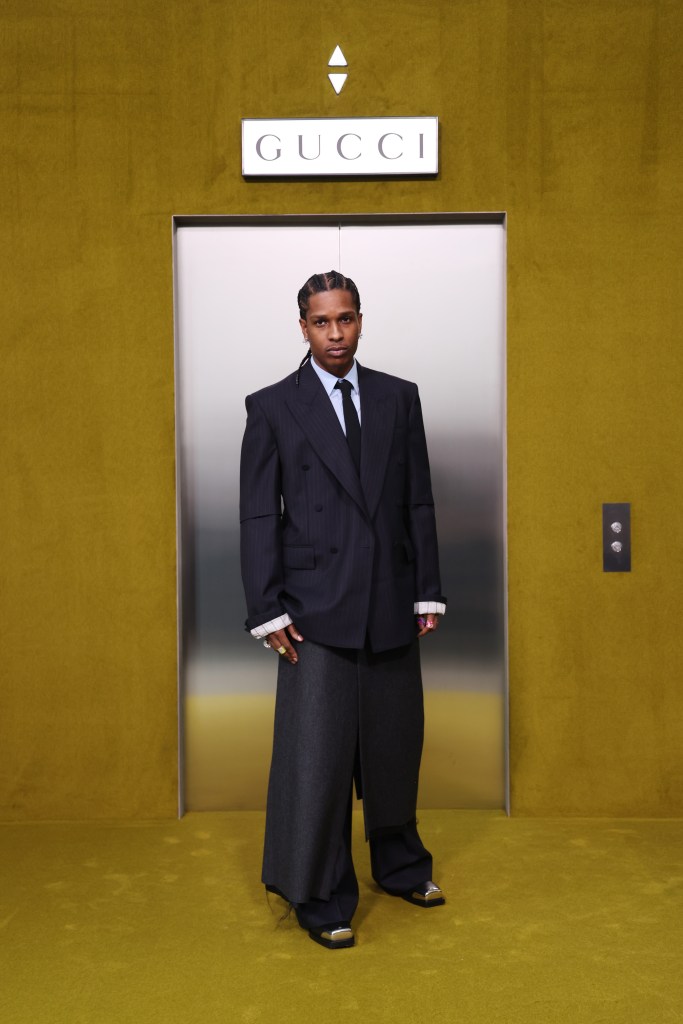
A$AP Rocky at the Gucci show during Milan Fashion Week Fall/Winter 2023/24 on February 24, 2023 in Milan, Italy.
Vittorio Zunino Celotto/Getty Images for Gucci
Can you talk to me about the photos you included in this book? I know there’s one with Biggie wearing Bape. I think you put in some exclusive photos that people might’ve not seen before.
I wanted a combination of photos that fans knew and loved. For example, Kanye and Virgil Abloh at Paris Fashion Week, that famous picture where they’re all standing in a line and impeccably dressed. But I also wanted to include photos that maybe fans hadn’t seen. So I was very lucky to get a great photo of Biggie, wearing Bape right before he passed actually. There’s a great backstory that I include in the book about how and why he was wearing this. And a lot of people don’t know, he was wearing it as early as ’97. So everyone having the debates about Soulja Boy versus Wayne versus Pharrell, he definitely has the crown there.
I also have a great photo of 2Pac in Milan and it is shot by David McLean. And this is a street-style photo. He just happened to catch him standing outside. And it’s just this beautiful, quiet moment where ‘Pac is just in contemplation. His head is down but he looks just gorgeous. He has a handsome face, he’s wearing the Versace leather vest. This is when he was in Milan to walk at the Versace Fashion Show. Incidentally, he was in Milan courtesy of VIBE Magazine, so I included that. There are 40 photos that span from Dapper Dan and Tupac Shakur to Pusha-T and Kid Cudi, Cardi B, and Lil Kim.
There’s a chapter called “Don’t Kill My Vibe” that breaks down the rise of VIBE and The Source. I just want to give some appreciation for these covers from the ‘90s like TLC Fires It Up. You mentioned a few of them in the book.
The VIBE covers weren’t just something everyone waited for every month to see the cover and their favorite artists. But they were the conversation starters. Be it Snoop on the inaugural cover. Whether it be TLC as firefighters or the Biggie versus Pac covers. These were the conversations in Hip-Hop and they drove them. So the covers, I knew they would be important. But as I was doing my research, even I was surprised about the [people] behind the scenes and how many big photographers came through VIBE. People like Mario Testino came through VIBE Magazine. I didn’t realize the first editor-in-chief, Jonathan Van Meter, came from fashion. He says it, he was a gay white boy running VIBE Magazine tasked to bring this high fashion sensibility into a Hip-Hop publication.
I was able to speak to some of the early people who were on the publisher side like Keith Clinkscales who was overseeing a lot of the magazine and how they brought someone like 2Pac and Versace together. So it was someone at VIBE who sort of had to convince Pac that, ‘Hey, you need to go work with Versace It’s important.’ Of course, he became a huge aficionado of the brand. He met Gianni [Versace]. But VIBE was so instrumental in this story of how Hip-Hop revolutionized high fashion.
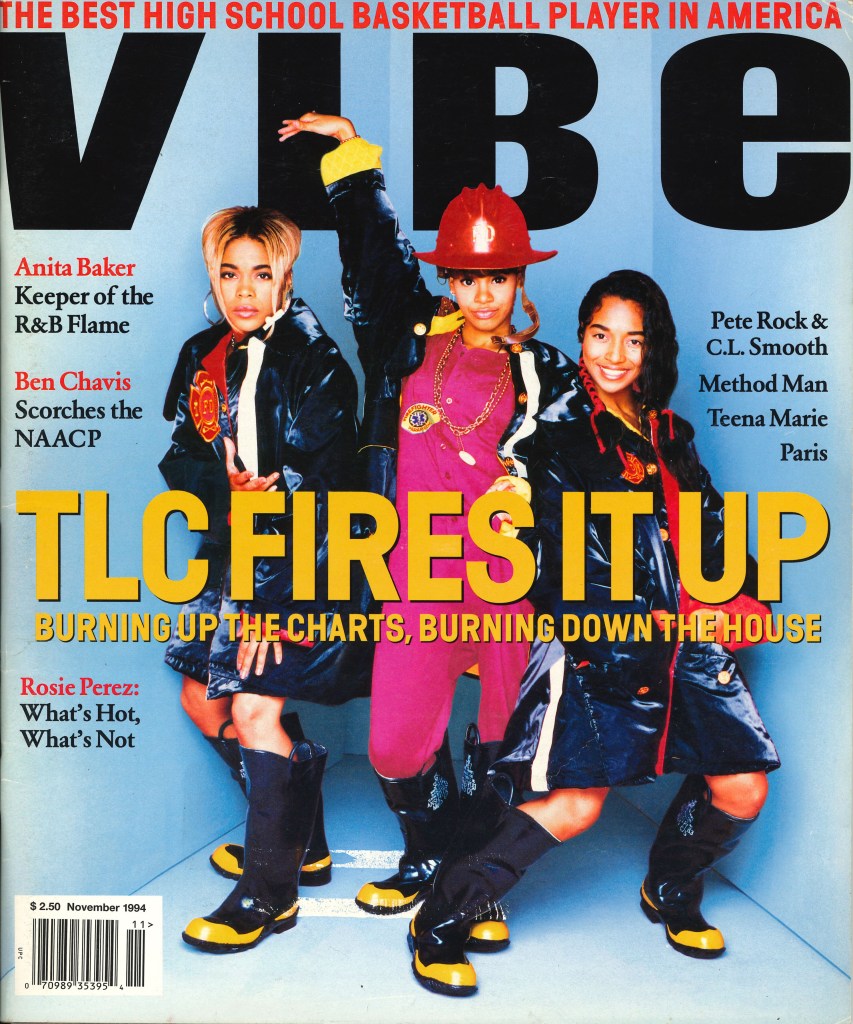
Dah Len
What did you discover about Hip-Hop’s contributions that you didn’t know before? What surprised you during the research and reporting process that you learned while you were putting the book together?
What surprised me is how comprehensive the story is. Often, when someone says Hip-Hop and fashion, it is through this cursory lens that we remember our favorite artist. Whether it is Biggie wearing Versace or Puffy with Sean John, we remember certain music videos or magazines. That’s the beginning and end of it. But this story starts from the very [arguably] first day of Hip-Hop and how we define Hip-Hop. So going back to August 11, 1973, the famous [DJ] Kool Herc party where he was spinning in the rec room has been told so many times. But a lot of people don’t know that the party was for his sister Cindy [Campbell], and she was doing it to raise money for her back-to-school clothes. So from day one, aspirational fashion had been embedded into the ethos and DNA of Hip-Hop.
I think it was also very important for me to go deeper into this story where we are uncovering things like the history of places like Harlem and why that was such a magical place for all these stylish people from Dapper Dan to Dipset to come out of, and then to also show this vast perspective. Of course, New York is the epicenter, but I make sure that we’re covering the West Coast, down South, and then overseas and showcasing just how far-reaching this story really is.
You insert yourself in parts of the book and you talk about how Aaliyah made an impact on your life and how you bought knock-off Tommy Hilfiger because of her. Did you ever consider writing an entire chapter dedicated to her?
I didn’t want to do a chapter devoted to a single artist, only because I think several artists would really deserve their own chapter and that would just turn into a different kind of book, and it wouldn’t read in the same sort of flow. But of course, Aaliyah was incredibly influential on me aesthetically. There was a time when every girl tried to have their hair swooped over one eye. You can’t see when you walk around like that, but it looks really cool I promise. I just love this idea of tomboy chic where it is effortless and beautiful. It was so easy and that style really resonates with me, even to this day, where I like that she never looked like she was trying hard. She wore the clothes. The clothes didn’t wear her, if that makes sense. I think Aaliyah, just for me coming in as a fan, unpacking that backstory of how she worked with Kidada Jones, who also worked at VIBE Magazine because her father is Quincy Jones. It was Kidada and Aaliyah who decided, ‘Hey, we should take men’s boxers, rip them up, and make them into a shirt.’ And that’s the famous look of Aaliyah in that Tommy Hilfiger bandeau. I was able to talk to Tommy Hilfiger and his brother Andy, who were very instrumental in being a dot connector between the music and fashion worlds. And they both had lovely things to say about Aaliyah and how important she was to their brand.
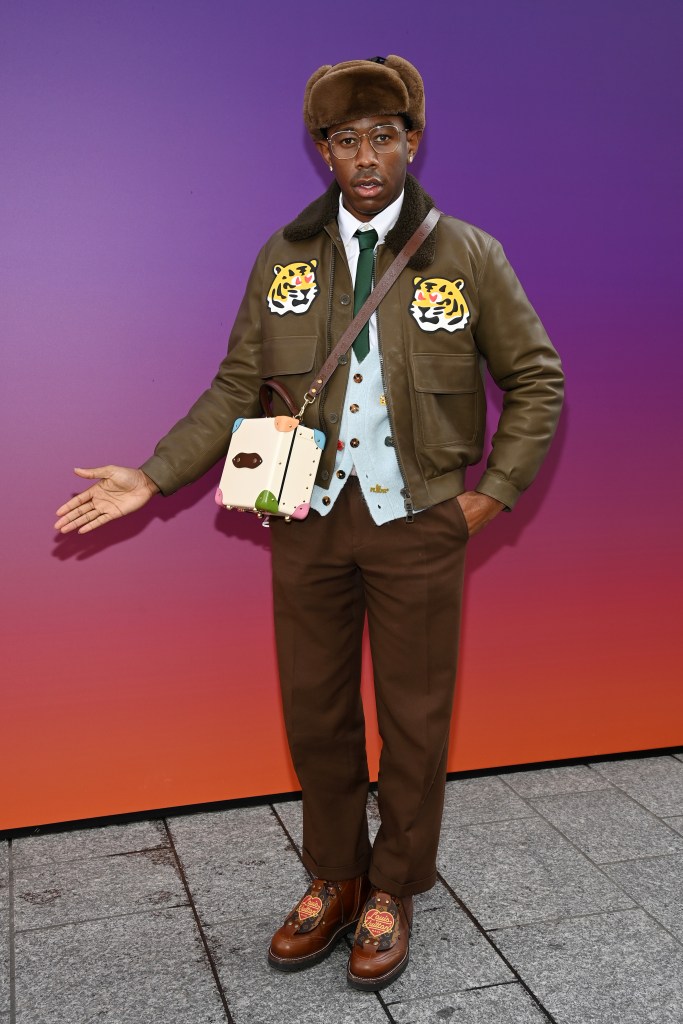
Tyler, The Creator at the Louis Vuitton Fall/Winter 2022/2023 show for Paris Fashion Week on January 20, 2022 in Paris, France.
Pascal Le Segretain/Getty Images For Louis Vuitton
In your interviews, you’ve been talking about wanting to see a Hip-Hop line situating itself as the next great American fashion house. Who do you think has a good shot at doing that? We can throw around names like Kanye, Drake, Pharrell, or Tyler.
I think Kanye did it in many ways. His story is still somewhat unwritten, as I mentioned in the book. But when it comes to someone who is serious about fashion and sees his name in many ways at the same level as other established houses, it’s Kanye. That’s hands down. When we are talking about other artists, I think Tyler would be interesting.
I think he has a good shot at it.
I mean, he’s killed it with Golf Wang and his merchandise. But I also think he has this great ardent fan base that would support him. Outside of that, I think he could pull in other people just because his aesthetic is different and unique. I think he has the sensibility of knowing what sells. I would love to see something from Tyler, I think he’d be great. As far as other people who I can see entering this design space, I could see someone like Cardi B doing it. She has a very interesting perspective of where she is.
Hot take!
She’s a haute couture darling, and she’s wearing things like Schiaparelli and the finest outfits that are made for her. But then she can also wear Fashion Nova and it feels very authentic so maybe there’s something of a high-low play. At the very least, I could see an established brand work with her in a meaningful way. I think oftentimes when we focus on things like celebrities and these big-name creative directors, overall I would just love to see more women in the space. So if Cardi or someone else can come into it, I think it would be really cool.
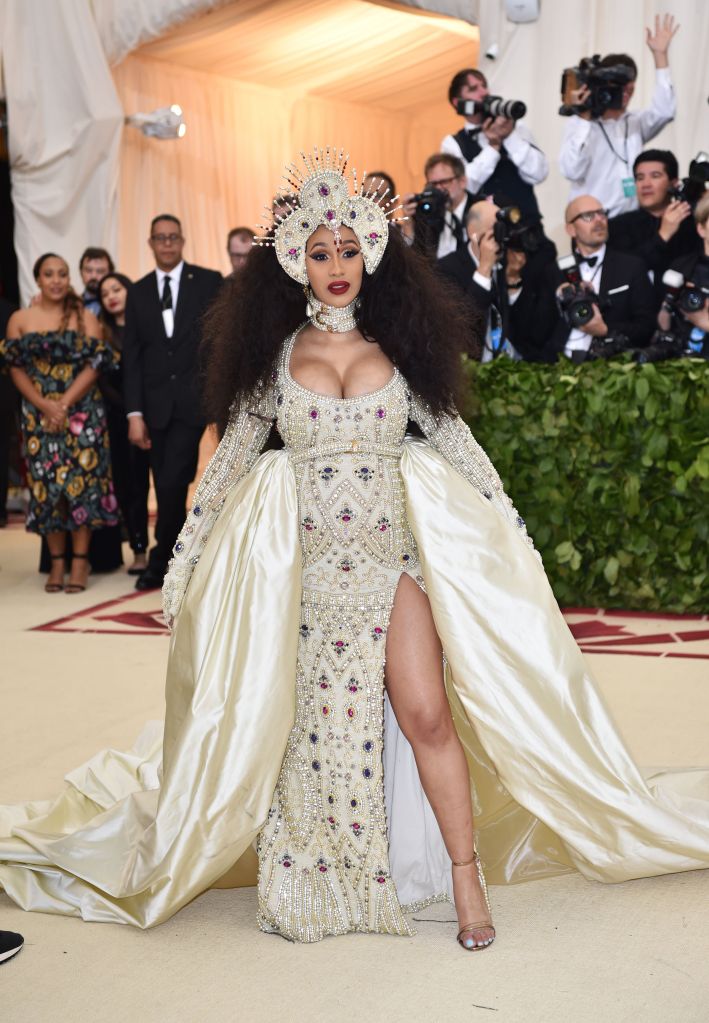
Cardi B at the 2018 Met Gala on May 7, 2018 at the Metropolitan Museum of Art in New York.
Hector Retamal/AFP via Getty Images
What do you think is the status of Hip-Hop being embraced in fashion today? Is it more about collaboration? Have things improved since the early years of Hip-Hop being shunned away from luxury fashion?
I think at the beginning it was an outsider and that’s where Hip-Hop sat in its relationship with fashion. And then outsiders became consumers, where artists were buying the clothes, but they really weren’t seen on a large scale as peers or serious partners. And now we’re in this age of collaboration. So a lot of positive strides have been made. Of course, someone like Pharrell at Louis Vuitton very much exemplifies that. How he began as just an ardent lover of fashion, launched his own line with BBC [Billionaire Boys Club], and now he’s in one of the most coveted positions in the fashion business.
When it comes to things like representation and inclusivity, it’s a very holistic and involved process. And what I would love to see from brands and from the industry is if that is important to them to make real long-term commitments in the space. So of course, working with the big artists or the big creative directors, but behind the scenes in the C-suite. Who’s making the decisions? And then even at all levels, like from the entry point of getting into the industry, fashion is still an industry that because of the low pay, the long hours having to live in a big city, can oftentimes be an impediment for a lot of people, especially people of color. So making that more welcoming, making it more possible to have a career and to survive I think is important as well.
I think we’ve made a lot of great improvements, but like with everything, there’s always room for growth. And I do hope that the fashion industry makes that meaningful connection and investment and doesn’t just see Hip-Hop as the hot trend of the moment or as something that’s commercially viable and that’s why they want to work with us.
How has your style evolved after writing Fashion Killa? Are you still rocking the flannel shirts and Vans slip-ons?
I remember I was talking to my parents. As I was planning my outfits for release week and all the radio I’m doing, press, and interviews I said, ‘Well, I didn’t realize when I was going to write a book about Hip-Hop and fashion that now I would have to dress better.’ So we definitely stepped the game up. The heels are coming out. I got to switch out the handbag situation. So, I’m much more mindful and thoughtful about it, which I think is very interesting. Now that said, I don’t want rappers out there thinking I’m getting dressed up for every interview, you can still see the Timbs or the Air Force 1s come out. But when I do have to speak about the book in a public space, I am mindful of presentation and aesthetics because it has to fit with the book. It must fit with just the whole mentality, culture, and lifestyle. So, thanks to Fashion Killa, I’m spending more money on clothes.
Fashion Killa is available now online and in bookstores.


